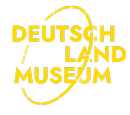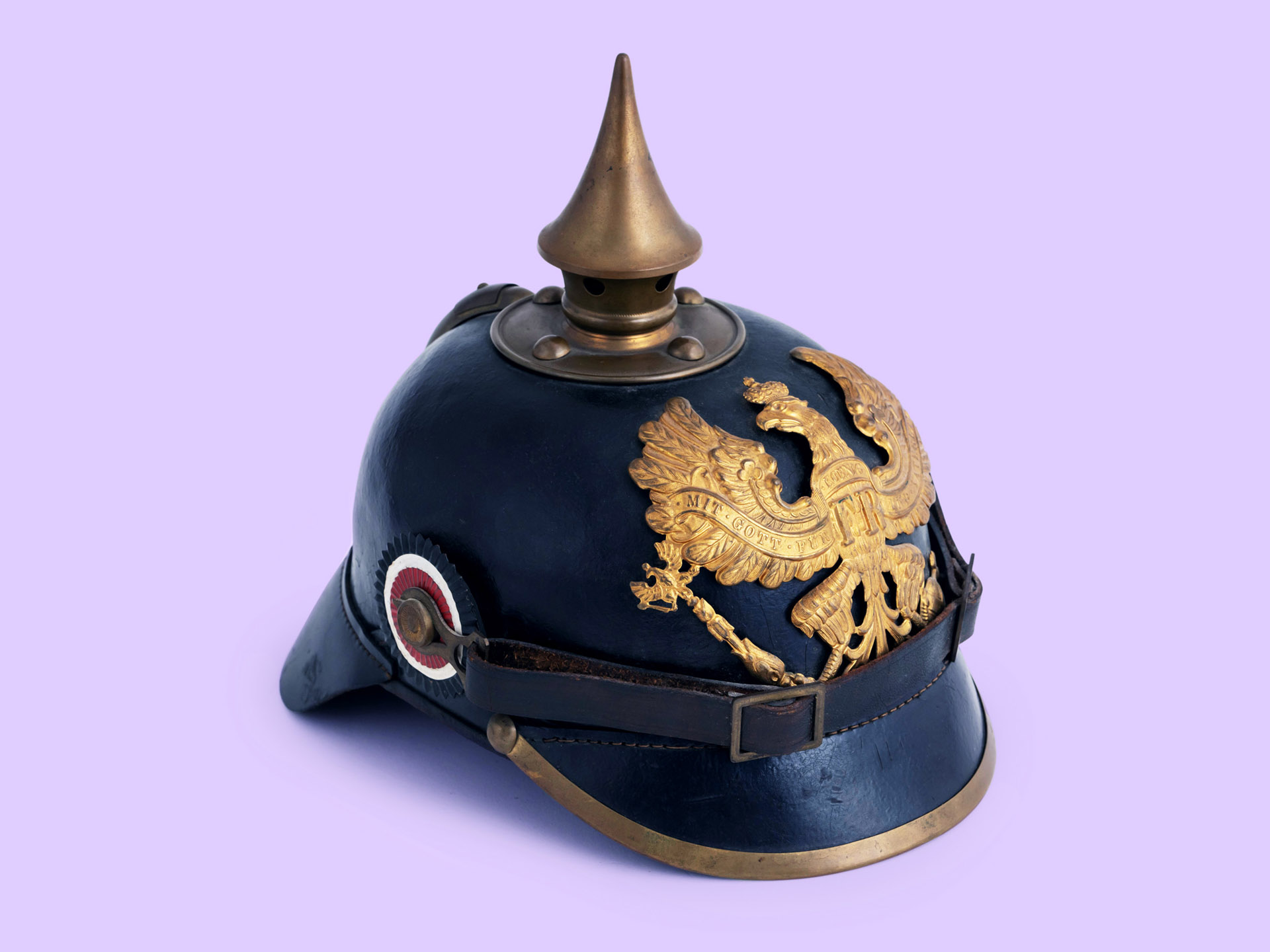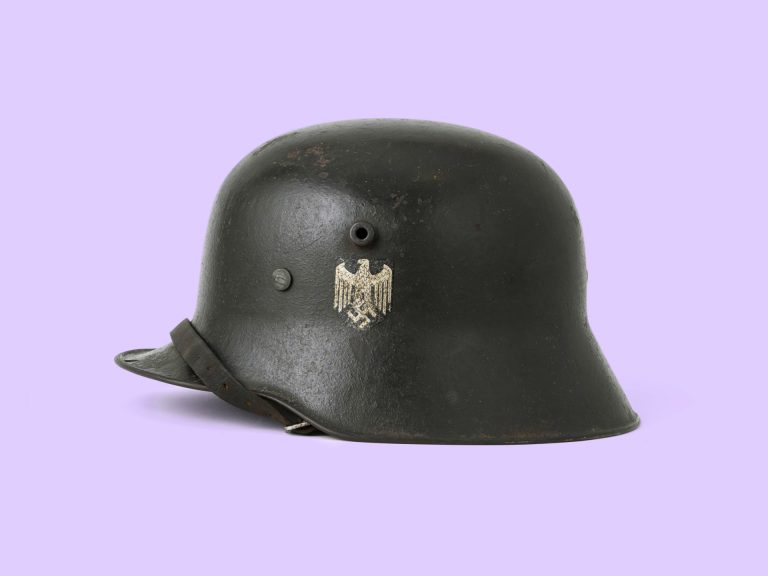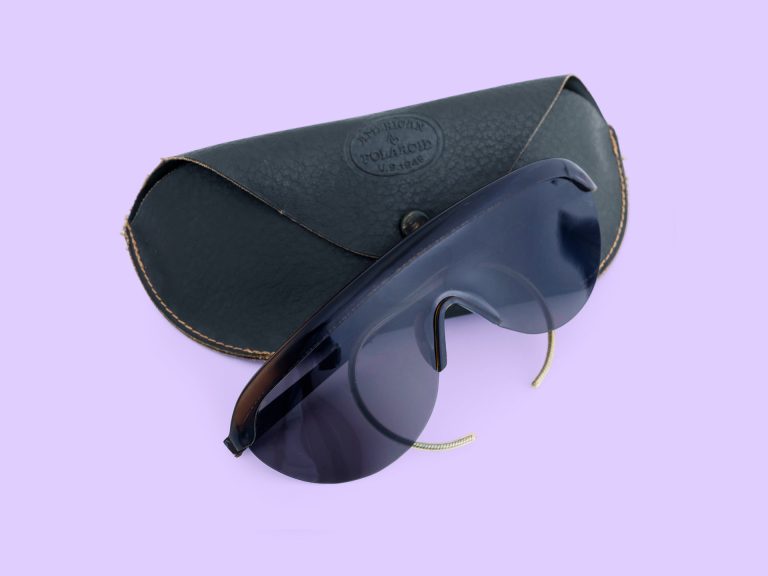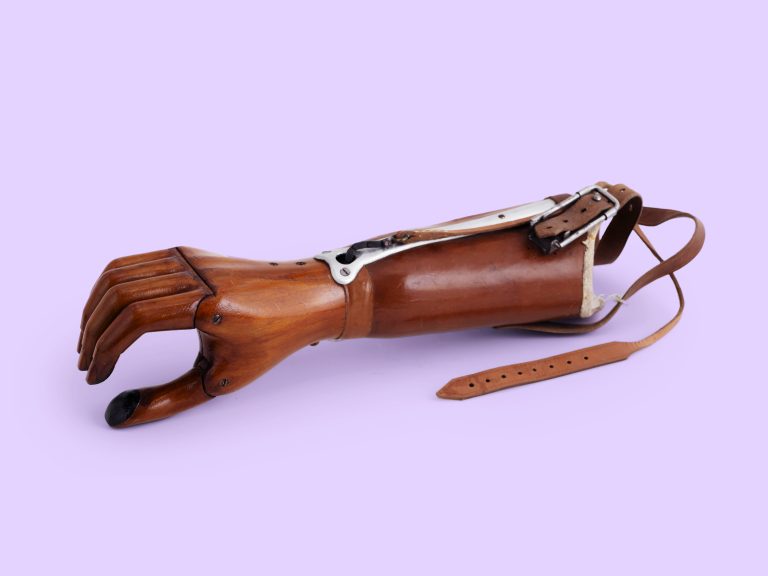Introducing the “helmet with a spike”
The history of the Pickelhaube began in 1842 with the introduction of a new type of helmet for the Prussian army. The most striking feature of this helmet was the metal spike attached to its top. The official designation was simply “helmet with spike”. Nevertheless, the term Pickelhaube quickly established itself in common parlance.
The metal spike was not entirely ornamental, but was intended to deflect blows from weapons aimed at the centre of the head. Subject to repeated modification, the Pickelhaube series began as an all-metal helmet, but proving too heavy, was re-designed to incorporate blackened, pressed leather with metal fittings.
Symbolizing Prussian militarism and authoritarianism
The new Prussian helmet was soon adopted by the armies of other German states after unification in 1871. The classic Pickelhaube was worn mainly by the infantry; those issued to other arms of the military incorporated certain changes. For instance, the helmet worn by artillerymen featured not a spike but a ball, to prevent the gunners from injuring each other when working in cramped conditions. Cavalry units favoured a heavy Pickelhaube with more protective iron and a low neck guard.
The Pickelhaube was not only used by soldiers, but was also introduced to the various police forces of the German Empire. Indeed, it became so ubiquitous that it came to symbolize first the Prussian and then the German military and the authoritarian German state. Numerous international anti-German posters and publications used the image of the Pickelhaube to trigger immediate associations with German aggression and militarism.
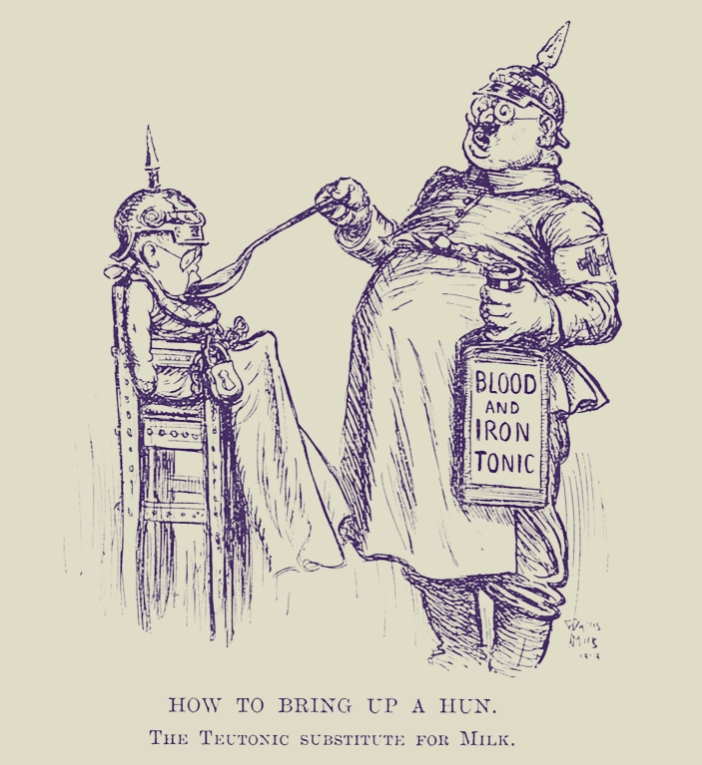
“How to bring up a Hun: Blood-and-iron tonic. The Teutonic substitute for milk.” Caricature from the satirical magazine Punch, UK, around 1914 (source: University of Heidelberg)
Dating the Pickelhaube in the exhibition
The simple, unadorned design of the Pickelhaube on display in the Deutschlandmuseum establishes it as that worn by a Prussian corporal, senior to a private soldier, but not holding a commission. The brass forehead emblem shows the symbol of the German federal state which the soldier served, in this case the Prussian helmet eagle, under which the Prussian motto Mit Gott für König und Vaterland (With God for King and Fatherland) can be read. This was the battle cry of soldiers prior to engaging the enemy.
Two features of the Pickelhaube on display in the Deutschlandmuseum help to date it: firstly, the leather strap is held in place with a standardized button, which was not used by the Imperial German Army until 1891. In addition, the helmet sports the black, white and red imperial cockade on its left hand side, a feature introduced in 1897. Previously, these circular insignia displayed the state colours of the federal state in whose army its wearer served.
The end of the Pickelhaube
The Pickelhaube proved to be unsuited to the demands of modern warfare and was replaced in 1916 by the steel helmet (Stahlhelm), with its distinctive coal scuttle form. The reflective metal fittings of the Pickelhaube were difficult to camouflage, which is why many were covered with fabric soon after the commencement of hostilities. The long spikes also provided good targets when their wearers moved around in the trenches. Above all, the pressed leather material did not provide sufficient protection against modern artillery rounds.
The Pickelhaube has not completely disappeared from modern-day Germany: in German sign language, an upturned index finger extended over the forehead symbolizes the Pickelhaube and translates as “German” or “police”.
Property information
Designation
- Date 1898-1915
- Gallery Imperial Germany
- Category Headgear
- Origin Germany
- Dimensions 20x30x25 cm (WxHxD)
- Material leather, metal
Property information
Designation
- Datierung 1898-1915
- Epochenraum Imperial Germany
- Kategorie Headgear
- Herkunft Germany
- Dimensionen 20x30x25 cm (WxHxD)
- Material leather, metal

About the Deutschlandmuseum
An immersive and innovative experience museum about 2000 years of German history
Reading tips and links
Lifesaver? The German Steel Helmet in the First World War
German Tank Museum Munster
Lifesaver? The German Steel Helmet in the First World War
German Tank Museum Munster
Share article
Other objects in this collection
Discover history
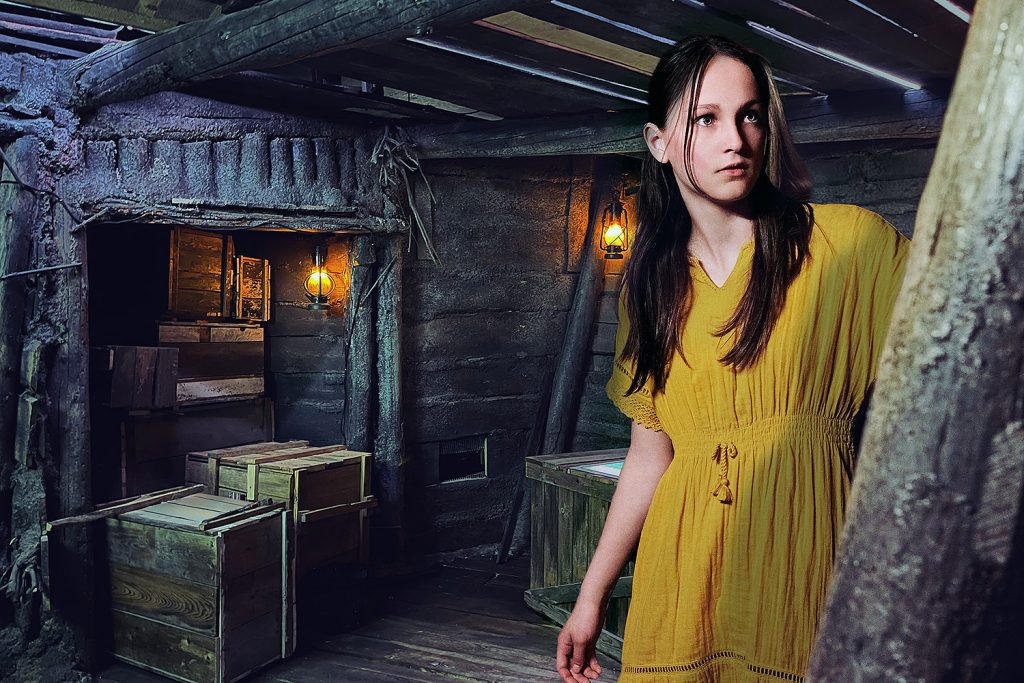
Visit the unique Deutschlandmuseum and experience immersive history
2000 Jahre
12 Epochen
1 Stunde
